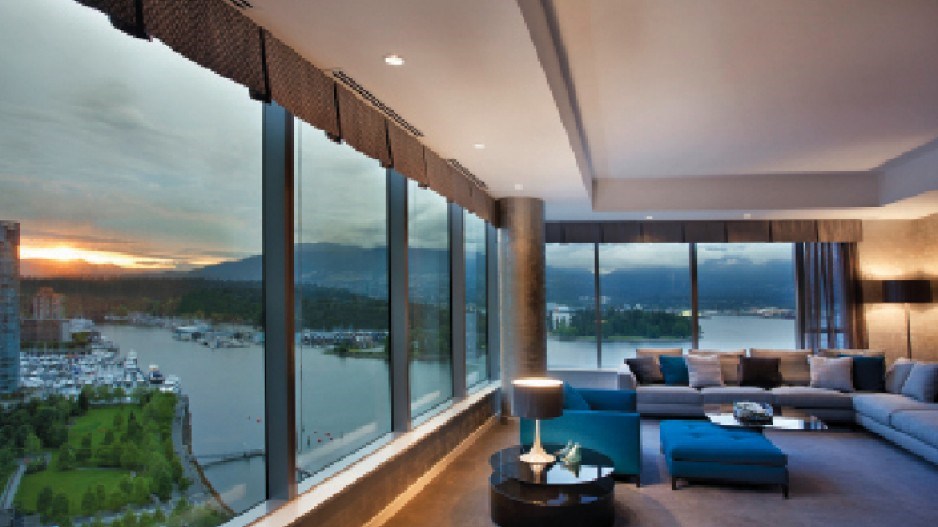Tide of listings
Triovest Realty Advisors Inc. has listed Capilano Business Park in North Vancouver with Avison Young, one of a number of office portfolios and business park developments to come on the market in recent months.
Described as a "trophy property, within a trophy location," the park has three office warehouse buildings with a total of 289,831 square feet split almost equally between office and warehouse uses. The properties come with 480 parking stalls.
The offering follows Concert Properties Ltd.'s recent listing of Surrey Central Business Park, an 18-acre development with five buildings and a total of 352,769 square feet.
Avison Young wouldn't comment on the listings, but the Urban Land Institute forecasts office properties to be one of the most desirable asset types for Metro Vancouver investors in 2013. According to Avison Young, office properties "topped all other asset classes in 2012," with deal activity tempered only by a lack of listings.
The current listings promise to give investors some choices when scouting opportunities.
HST disappears
Rules aimed at ensuring an orderly transition from the HST to the old PST when it comes to real estate sales didn't dampen a bid by at least one firm to tout the phasing out of the sales tax as a reason for some buyers to defer purchases.
The phenomenon is limited to a single building in Coal Harbour, Three Harbour Green by Aspac Developments Ltd., but Magnum Projects Ltd. managing director Lily Korstanje said more than 20 buyers had opted to defer the closing date of their purchases until after April 1.
The average price of the units is $5 million, which under the HST would have required payment of $600,000 in sales tax. As of April 1, that average per unit falls to $350,000.
While the amount is significant for individual buyers, who bought their units within the past three months, the phenomenon is limited because there's little standing inventory of new luxury product on which the full weight of the HST was applicable until March 31.
Cameron Muir, chief economist with the BC Real Estate Association, doesn't expect a significant increase in sales as a result of the disappearance of the HST.
"You may see a measureable pickup in overall sales of new houses, but I don't think the floodgates are going to open," he said. "If we do see a big surge in sales activity this spring, there's other factors involved."
Vacancy stats
The latest kerfuffle over the number of vacant condos in downtown Vancouver garnered headlines for the most startling of the statistics – that between 17.1% to 22.8% of units in census tracts on the downtown waterfront were either vacant or occupied by temporary or foreign residents on May 10, 2011.
Presented by Andrew Yan, researcher and senior urban planner at Bing Thom Architects, the statistics were helpful in breaking out – according to census data – vacancies on a given day.
Stepping back, however, a curious fact emerged: the overall condo vacancy rate for the city stood at just 7.7% – a less startling number, and not just in comparison with specific neighbourhoods.
In 2009, Yan himself reported that vacant condos in downtown Vancouver represented just 5.5% to 8% of the overall stock.
And this followed a city staff report in 2004 that pegged the percentage of vacant downtown condo units at between 8% and 9% in 2003, or 4% of all downtown apartments, based on power use. This was on par with figures gathered by the 2001 and 2006 federal census.
Perhaps more newsworthy is the fact that, despite hand-wringing over foreign buyers and the influx of foreign capital fingered as driving up housing prices, the proportion of unoccupied dwellings in the city hasn’t changed much over the past decade.
One can’t say the same for prices and overall housing affordability. •




